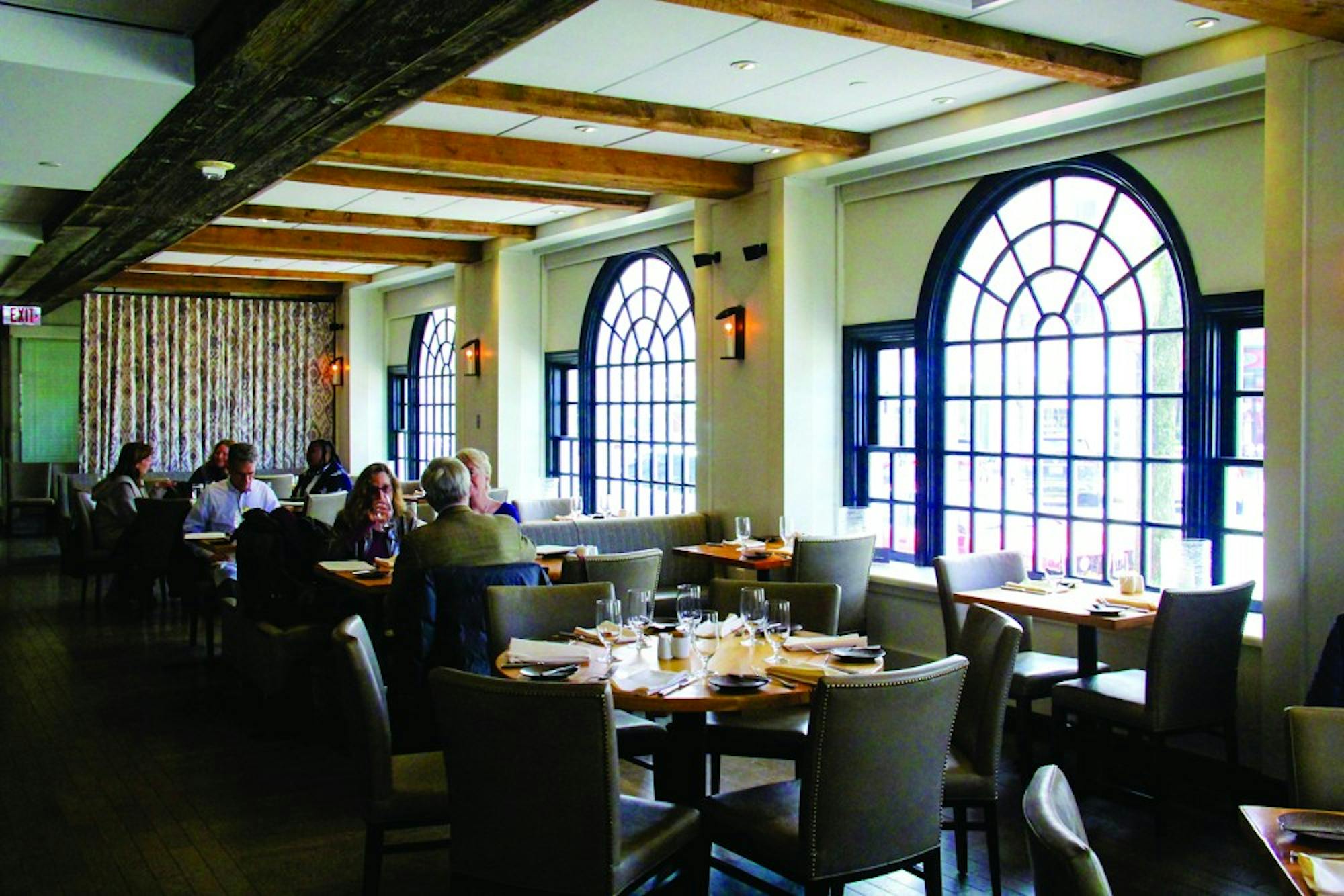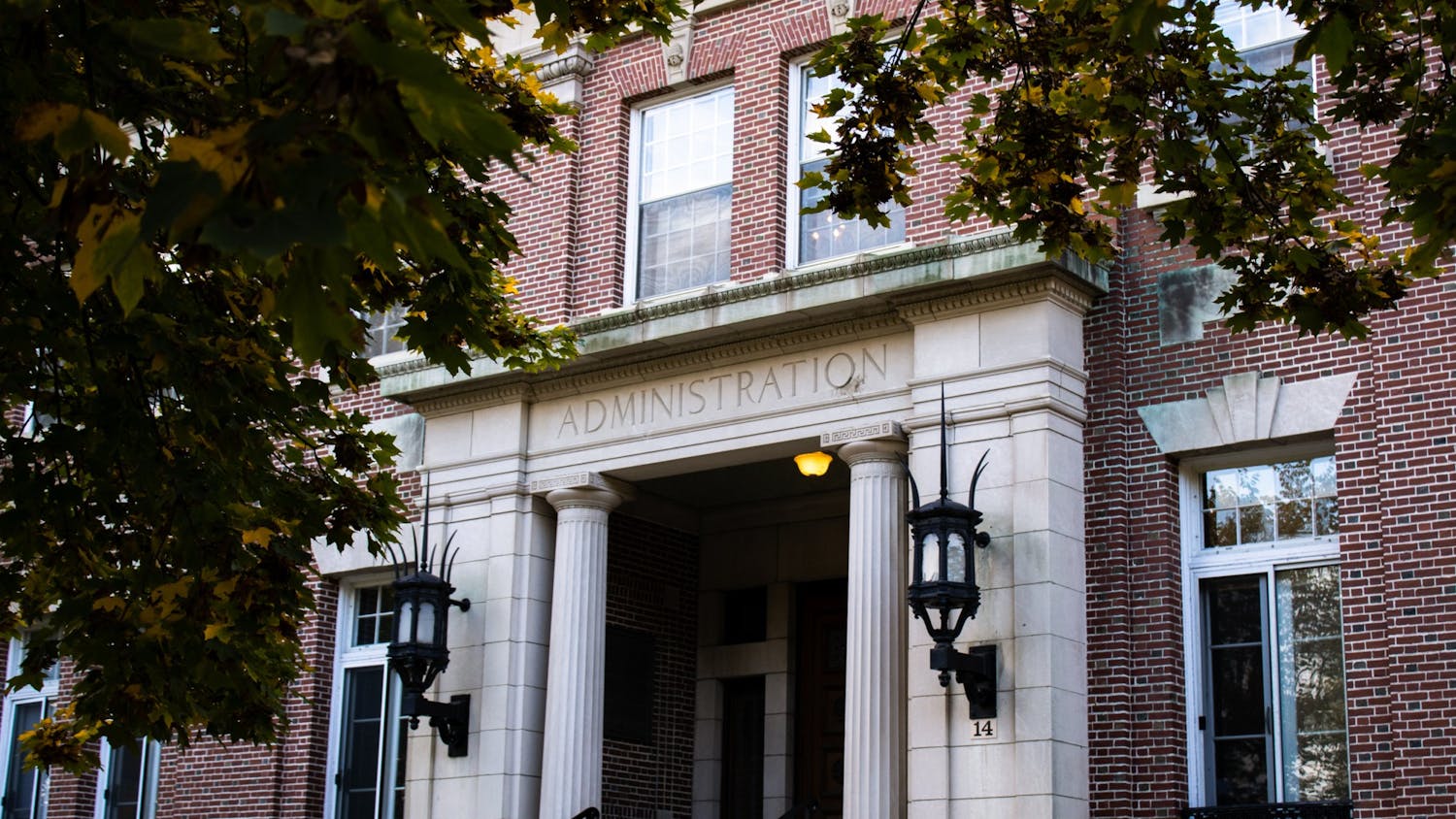Many Dartmouth students rarely interact with their professors outside of a classroom context. They might attend the occasional office hour or stop to chat after a lecture, but it isn’t often that they have the opportunity to truly get to know their professors. At Dartmouth, however, students have the opportunity to grab a meal with a professor of their choice through the Take Your Professor to Lunch program run by the Undergraduate Dean’s office.
According to Michelle Kermond — Associate Director and Assistant Dean of Undergraduates — the program began in 2011 when “President Jim Wright asked the Dean of the College for ways to increase student and faculty interaction outside of the classroom.” Now, an average of 450 students take advantage of the offering each term, Kermond said.
Each term, the program allows students to take one professor to either Pine or Foco for a breakfast or lunch fully paid for by the College. Because Dartmouth covers the costs, it makes this opportunity “accessible to all students,” according to Kermond.
She also clarified that the student does not have to currently be enrolled in a professor’s class to take them for a meal.
“It could be for a past faculty member, or someone who maybe you haven’t even met yet, but are really just interested in their work or doing research for them,” Kermond said.
Economics professor Melinda Petre explained that, from a faculty member’s perspective, the opportunity to talk to a student casually is what makes the program so exciting.
“[The program] sets up an informal interaction between students and professors outside of class and unrelated to class materials,” she said. “I definitely appreciate having that opportunity.”
Kermond also emphasized how a lunch can lead to further academic opportunities, as well as lasting relationships outside of the classroom.
“From my personal experience, I would have students who maybe wanted to ask a professor to be their major advisor, or their thesis advisor or for a letter of recommendation,” she said. “And a lot of times like this could be a way for them to connect with their faculty members and ultimately create some long lasting relationships.”
Ansh Motiani ’26 has used the program three times since his first term at Dartmouth. To him, the program allows him to see professors in a context outside of the classroom.
“[You get to] genuinely connect with the people teaching you … it’s not the usual lecture,” he said. “You are able to understand why professors do what they do and what their journey is like.”
Since its inception, the logistics of the program have changed quite a bit. For one, the opportunity began as a strictly one-to-one opportunity for the professor and the student to get together, according to Kermond. However, after receiving feedback from a few who felt intimidated by this rule, Dartmouth adapted to allow a student to bring up to two friends, who require no connection to the professor, along for the meal.
Still, some students feel uncomfortable asking professors out to lunch. One student, Mia McClure ’24, emphasized that it can be difficult to approach certain professors.
“I definitely have some professors that I’m more intimidated by,” she said. “There’s some professors that I’m like, ‘I really would love to do it.’ But just I feel like there’s a wall in terms of how busy I am [and how] busy professors are.”
According to Kermond, students also used to have the choice of bringing faculty to Moosilauke Ravine Lodge, but this has since been discontinued; the current dining options are only Pine and Foco. Deciding where to eat comes down to personal preference. While many students choose Pine for a more fancy and typical scene for lunch, reservations can be hard to find.
“Primarily most of our students do choose Pine, but sometimes you can’t get in depending on the time of when you ask,” Kermond said, “Making a reservation or getting one can be a little bit difficult … even coordinating schedules.”
To some, asking a faculty member to share a meal is a straightforward process. After confirming with the professor that they are interested in a meal, all the information regarding reservations, tips and deadlines can be found on the Dartmouth Undergraduate Deans Office website. To request the voucher itself, students log in to DartHub and click on the tab “Take a Faculty Member to Lunch" and follow the instructions.
However, not all students feel as though the program — and specifically how to use it — is well publicized. Even though she knows its importance to campus culture as a tour guide, McClure has not personally used the program and cites the pandemic as a potential reason why she may have never taken a professor out to lunch.
“I think as a ’24, COVID stopped me from knowing about a lot of the resources on campus like this program,” she said. “It wasn’t as well publicized.”
Other students, such as Motiani, use the program often. He dined with a professor through the program his first-year fall and spring and most recently took his CS70: Foundations of Applied Computer Science professor to Pine last week. With a few friends, they talked about research, generative AI, passion projects and their professor’s journey to the field he specializes in today.
One of Motiani’s favorite aspects of the program is receiving advice beyond the classroom.
“I love talking to [professors] about research or projects or general advice,” he said. “They have years and years more experience studying a certain area than students do, so having 30 minutes to an hour of their time to talk about anything is invaluable. You can make it fun or serious, but developing that personal connection makes learning a lot easier.”
For Petre, that personal connection is often something missing from a larger lecture setting.
“I teach a lot of students, and I wish I could get to know every one of them very personally,” she said. “When a student goes out of their way to select me when they have many options, I’m very grateful for that opportunity.”
However, even McClure acknowledged how beneficial the program can be. With the rest of her senior year, she looks forward to potentially using the vouchers to take out some professors that she has known for over three years before she graduates.
Taking your professor to lunch may sound intimidating, but it doesn’t have to be. For many students, it’s a great opportunity to get to know them without the pressures of doing so in the classroom — an opportunity your professor values equally.
In fact, if Motiani could change anything about the program, he’d want even more vouchers per term.
“I’d take all my professors to lunch if I could,” he said.




